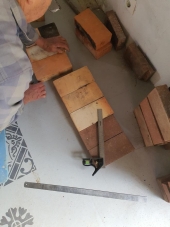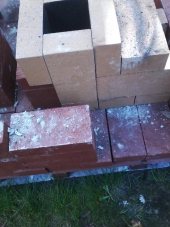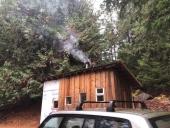





 1
1




Aim High. Fail Small.
Repeat.





![Filename: 20201108_115233.jpg
Description: [Thumbnail for 20201108_115233.jpg]](/t/151677/a/126429/20201108_115233.jpg)
For all your Montana Masonry Heater parts (also known as) Rocket Mass heater parts.
Visit me at
dragontechrmh.com Once you go brick you will never go back!




 1
1





![Filename: 20201121_190722.jpg
Description: [Thumbnail for 20201121_190722.jpg]](/t/151677/a/126442/20201121_190722.jpg)

For all your Montana Masonry Heater parts (also known as) Rocket Mass heater parts.
Visit me at
dragontechrmh.com Once you go brick you will never go back!
 2
2




Aim High. Fail Small.
Repeat.




thomas rubino wrote:Hi Neil;
Eliot did a good job already, but I'll see if I can expand on that.
1)Heavy and or insulated Firebrick are used in the core box but ceramic blanket (5 minute riser) is becoming the new standard for a riser.
2) Most batches are located at floor level but they can be elevated. A plinth of red clay bricks and cob can support a core unit. My shop stove is that way.
Others have used a metal frame to support a properly insulated core.
3)There are places concrete can be used in a bell or low in a mass. Most landscape brick is concrete.
Solid clay bricks are the preferred one.
If solids are not available, they can be filled with mortar or is sand clay mix a better choice.
4) When using dry fireclay and bagged sharp sand . The mix is 3 parts sand to 1 part clay. Lincoln 60 fireclay in #50 sacks and I like medium builders sand in #100 sacks.
5)Yes , Clay mortar should be used in the core unit and is highly recommended for the whole build.
Regular cement mortar mix can be used in a bell anyplace away from the core and riser. In the high heat area near the core and riser only refractory cement would hold up.
6) Yes two barrels extract a large amount into the shop, the brick bell helps hold that heat a long time.
If you had limited horizontal space, how much of heat retainment in your shop would you give up?
7)With a bell it might be years before enough ash accumulated to need cleaning. I used a standard masonry cast iron door as an access to my bell.
8)Peters measurements should be followed exactly on your core build. Box size and port dimensions have been dialed in by Peter and no modification will make an improvement.
9)The chimney needs to be the same as or larger than the riser size.
10-A-B-C) All bells exhaust from the bottom of the last bell.
11)Not sure here but you want to use well casing as a chimney?
I burnt out a stainless steel chimney in the first three years, so the well casing. In addition because of its mass there is a lot of heat retainment.
My plan is for the chimney to draw from the bottom of the brick bell instead of exhausting to a separate chamber like yours.[color=blue] [/color]
You can if you want to but most just use regular black stove pipe and hvac pipe indoors. Then insulated pipe outdoors.
12) Sawdust would explode if you tried to get any in a lit batchbox... they glow orange with a back wall temp around 2000 F. Maybe make a log with the sawdust and place it in before liughting.
So filling the firebox chamber 33-60% full with sawdust at start up should not cause the explosion? In my box I do not see this, probably because a coal shovel full goes in at one time.
13) With a 6" batch and a brick OR metal bell you can fit any footprint you have available.
That's enough for you to chew on for now.
Come on back anytime we will leave the light on for you!
Is your heater one big bell, or are there two? One with barrels emptying into the masonry one?
When going with a full load and temps near freezing, what is your chimney temp? How warm can you get your shop?
Thanks Thomas and Elliot for all the great information and the responses to my questions.




 1
1




For all your Montana Masonry Heater parts (also known as) Rocket Mass heater parts.
Visit me at
dragontechrmh.com Once you go brick you will never go back!












For all your Montana Masonry Heater parts (also known as) Rocket Mass heater parts.
Visit me at
dragontechrmh.com Once you go brick you will never go back!




 2
2








Silence is Golden
For all your RMH needs:
dragontechrmh.com

|
Our first order of business must be this tiny ad:
Play Your Way to a Sustainable Lifestyle: Uncover Permaculture Principles with Each Card
https://gardener-gift.com/
|







